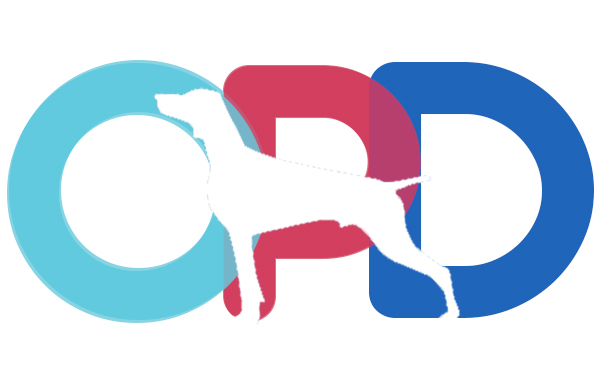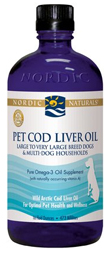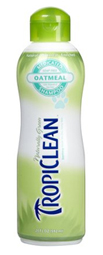The numerous causes can be make it tough to pinpoint the specific affliction affecting your dog.
But not to worry… we’re here to help and discuss the following:
- The main symptoms of dog skin disorders
- Common causes of dog skin problems
- Natural and holistic dog home treatment options
Symptoms of Dog Skin Disorders
Though dog skin diseases can be very aggravating for your dog, they are always the easiest to detect and often times the easiest to treat.
Keep in mind that your dog is very different from the dog next door, meaning the two dogs could contract the exact same skin condition and could be showing very different physical symptoms.
Dog skin conditions and dog skin disorders may show one or more of the following symptoms
- Anal glad problems
- Brown, black or grey discoloration
- Chronic inflammation of the inner ear canal
- Very dry skin
- Skin flaking, resembling dandruff
- Foul odor to the skin
- Greasy coat
- Hair loss
- Dog itchy skin – mild to severe (meaning blood is drawn from scratching)
- Large brown flakes
- Pimples and blisters that may discharge blood or pus
- Dog skin rash
- Redness and irritation
- Scabs or crusts
- Dog Warts
Common Causes of Dog Skin Conditions
The skin is the body’s largest organ and is very responsive to the overall health of the body. And the overall health of the body can be affected from both inside and outside her body. This can make it very difficult to determine the exact cause of the problem.
What’s more, some factors could be occuring without your knowledge.
We’ll get into many of the possibilities in a moment. First…
If you’re not sure what to do after reading this page, play it safe and get the advice of a holistic veterinarian.
Links to skin-related questions and answers submitted to My Online Vet from other visitors can be found in our My Online Vet Ask-A-Vet Library sections on Dog Rashes, Marks, Spots, Lesions & Patches, Dog Allergies, Dog Hair Loss or Dog Warts, Cysts and Strange Growths.
Don’t write any of the following possibilities off until you explore each thoroughly…
- Poor quality dog food (do NOT just skip over this point)
- Parasites
- Toxic environmental pollutants
- Vaccinations
- Psychological factors
- Supressed disease
- Dog skin allergies
- Bacteria (Pyoderma)
Poor Quality Dog Food
The number one cause of skin conditions in dogs is poor-quality food.
Unfortunately, many dog owners believe that they are feeding their dogs a high-quality diet when their dog food is actually harming their dog.
To know for sure whether the food you feed your dog is high quality and nutritious, test your dog’s food using our free Healthy Label Test.
If your dog’s food doesn’t receive at least a 4 out of 5, it’s time to explore new dog food diets.
The Impact of Dry vs. Moist Dog Food
While attempting to heal a skin problem, make sure you are feeding your dog a moist dog food (i.e. canned natural dog food or raw natural dog food). Dry dog food alone will not provide your dog’s body with enough moisture to help the skin heal.
Parasites that Cause Dog Skin Conditions
Skin parasites tend to be the most attracted to dogs that have a poor overall health. These can be aging dogs, dogs with an inadequate diet or dogs living in an unhealthy environment.
Dog skin parasites range from mild to severe and each type can cause a different reaction in your dog.
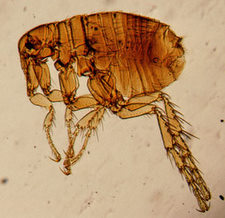
Here is a list of the common dog skin parasites along with the symptoms of each (click the links below for more information):
Dog fleas – Many dog owners have dealt with fleas at one time or another, and with adequate treatment they can be history in no time!
Symptoms of fleas: Persistent biting, nibbling and/or scratching different areas of the fur or skin.
Dog ticks – Ticks are not permanent residents on the skin of your dog. They attach themselves to the skin, suck some blood, and then fall off to lay eggs. While they do not usually present a big problem, they can carry a couple of scary diseases and should be prevented just in case.
Symptoms of ticks: Dogs will often show no symptoms, but you can easily spot ticks attached to the skin – another good reason for frequent dog grooming.
Dog lice – Lice are less common on dogs than ticks and fleas, but there are still many reported cases. They are tiny white varmints that may be difficult to find… you will need to look for the eggs attached the hair follicle of the dog. These too are easily treated.
Symptoms of lice: As with fleas, persistent biting, nibbling and/or scratching different areas of the fur or skin. Lice are much less common than fleas, so look closely to confirm which one you are dealing with (see our Dog Flea Medicine and Dog Lice pages to learn what they look like).
Dog mange – Dog mange can be very serious and can cause your dog much distress and physical discomfort. The most common form of mange is caused by a tiny mite that lives in the hair follicles of the infested dog. There are a few other forms of mange which are discussed in detail on our How to Treat Dog Mange page.
Symptoms of mange:
- Itching and a dusting of “dandruff” around the head, neck and back
- Thinning of the hair around the eyes, mouth and front of the legs, evolving into patches approximately one inch in diameter
- Skin patches may become sore, crusted and oozing
- Digging and biting fur or skin in a ferocious manner (similar to flea infestation or severe skin rash or disease). This may in turn irritate the skin and cause oozing sores, crusty ear tips, intense itching and loss of hair, mainly on the ears, elbows, legs and face
Ringworm – Ringworm is a fungus (not a worm) and can be a serious problem. It can also be spread to humans. If your dog has widespread ringworm, it is probably an indication of overall poor health.
Symptoms of ringworm:
- Often starts as a red area, then it develops into a small ring that slowly grows
- Area surrounding ringworm will often be hairless or stubbly
- Thickened skin
- Scabbed and/or irritated skin
Toxic Environmental Pollutants
Our dogs are living in a human world, and often times we don’t think about the effects that may have on our dog’s health. Certain toxins we use in our homes and gardens can be harmful. Make sure to do your research before using sprays in and around your home. And if you must use a toxic spray, keep your dog far away for a safe amount of time.
There are also several possible pollutants out of your direct control that certain dogs may be sensitive to. Unfortunately, if you live in an area with high levels of pollution you may not be able to do anything about this cause of dog skin problems (unless you are willing to move, of course). This site will help you better understand what you’re up against in your city.
Vaccinations
Certain dogs may have negative skin reactions to vaccinations. There is no way to tell whether or not your dog will react negatively to specific vaccinations, but if it does happen, go back to your veterinarian immediately and they will be able to help you. The necessity and health impact of vaccinations is heavily debated between the conventional and holistic veterinary communities.
See our Dog Vaccination Schedule page to better understand the debate along with your vaccination options.
Psychological Factors
Think about the last time you were extremely stressed at work or home. Can you recall any type of physical reaction to this mental stress? Certain people may experience an acne break out or a skin rash, while others may sweat excessively or develop canker sores.
Our dogs can have similar physical reactions to mental difficulties, which include skin problems. Dogs who are very bored, stressed, angry or irritable or lack stimulation on a daily basis may show these mental issues through the skin.
A good local holistic veterinarian can help you determine whether this could be the case for your dog.
Suppressed Disease
Diseases will sometimes appear to go away when they are actually still present in your dog’s body. This is especially common when a disease’s symptoms have been treated conventionally.
Especially if your dog has had acute or chronic problems in the past, we highly recommend visiting a holistic veterinarian for recommendations on how to cure an underlying disease rather than just focusing on the symptoms.
To better understand how a holistic vet differs from a conventional vet, see our Dog Vet Care Comparison page.
Dog Skin Allergies
Dog skin allergies are extremely common and can come from food, bugs or your dog’s environment.
See our Dog Skin Allergies page for the details.
Bacteria (Pyoderma)
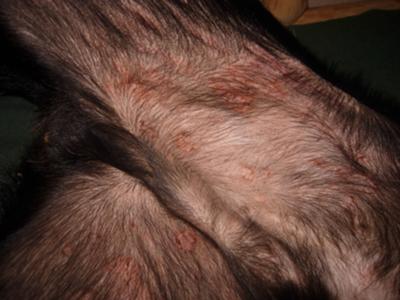 |
| Pyoderma has many different looks. Here’s one example. |
Pyoderma is a very common localized skin problem caused by bacteria such as that found in hair follicles or which comes from flea bites. Where ever the bacteria have entered the skin (i.e. via a hair follicle) a pimple(s) will often form which breaks open, causes the hair to stick together and causes some itching and scratching, which draws more bacteria.
Puppy pyoderma is a skin problem also caused by bacteria and is very similar to diaper rash in human babies.
Canine acne is also the result of skin bacteria.
The bacteria found on the skin do not cause any problems in a healthy individual with a strong immune system. But dogs with less than ideal immune systems are much more susceptible to skin problems such as pyoderma or acne.
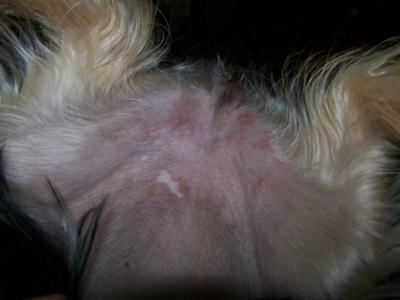 |
| One example of Puppy Pyoderma |
Stress can be an underlying factor that can affect the immune system and lead to pyoderma, but OVER vaccinating your dog, DRY dog food diets and exposure to the chemicals found in flea and tick products are factors that play a far greater role.
The underlying cause and how to prevent it is the bigger question…
- Was there an irritating shampoo that was used at the groomer’s and was not completely rinsed off?
- Was a dog vaccination recently given?
- What type of food do you feed? Is it a wholesome, healthy food, such as a raw diet or a healthy canned dog food with some fresh vegetables and meat added? Or a DRY FOOD DIET which is the worst diet for maintaining a healthy skin?
Treatment for this and the other conditions reviewed in this section is discussed further down the page.
For a list of actual pyoderma cases & photos and our holistic veterinarians’ advice specific to each situation, see the Pyoderma Section of the My Online Vet Ask-a-Vet Library.
Natural and Holistic Treatments for Dog Skin Disorders
If you notice a skin condition developing on your dog, there are a few things that you can do to treat it at home. If at any time the skin condition worsens or becomes serious, seek guidance from your veterinarian immediately…
- Preventive dietary supplement
- Dog fasting
- Additional supplements to try after fasting
- Proper natural skin care around affected area
It’s a good idea to always check with your veterinarian before treating any dog condition and before making any changes to her diet.
Preventive Dietary Supplement
As a preventive measure, if your dog is prone to skin problems we recommend supplementing their diet with the herbal Skin & Coat Tonic from Native Remedies.
It contains several herbs that have been proven to improve the health of the skin and coat, along with other positive effects such as boosting the immune system, liver, kidney and thyroid functioning:
- Horsetail – known for its high silica content, which is the main component in all connective body tissues. Positively effects all body tissue along with urinary tract health.
- Dandelion – benefits the liver and digestive system and helps to maintain normal blood pressure.
- Spirulina – contains protein, vitamins and carotenoids and supports energy, the immune system and liver functioning.
- Fucus vesiculosis – concentrated source of minerals, and aids in the production of thyroid hormones which helps to maintain healthy metabolism in all body cells. One of its major effects is to improve overall skin and coat health.
- Kalium sulphate – a salt that is essential for distributing life giving oxygen throughout the body and keeping cell membranes in peak health.
Dog Fasting
Dog fasting is the first step to combating a specific skin problem or outbreak.
Fasting your dog mimics what the dog would do in the wild which is to allow the dog’s body a chance to clean itself out. It will also allow the dog’s system to focus on healing the disorder instead of spending energy digesting food.
See our Dog Fasting Guidelines for the specifics.
Additional supplements to try after fasting
If fasting doesn’t work, try supplementing your dog’s diet with one of the following:
- Cod liver oil
- Cold-pressed unsaturated vegetable oil
- Granular lecithin
- Nutritional yeast
- Vitamin C for Dogs
- Vitamin E for Dogs
The amount of supplementation depends on the size of your dog… talk with your vet or one of ours to determine the proper amount for your dog.
Proper natural skin care around affected area
If your dog has particular areas where he is developing dog skin conditions, follow these steps to clean and treat the area:
- Clip away excess hair covering the spot on the skin.
- Bathe your dog, focusing special attention on the spot(s). Use a mild organic soap or shampoo. We like the Tropiclean Oatmeal Shampoo.
- After drying the hair and skin, try cleansing the spot(s) with a black or green tea. This can be done often. Using these teas supplies a tannic acid which helps to dry up the moist areas of the skin.
- Next, apply natural Vitamin E oil or an aloe vera gel extracted from a living plant. These plants can be found at most health food stores.
- Additional home-based options include:
- Apply a little milk of magnesia by pouring a little onto a cotton ball and applying it to the skin of your dog.
- Apply a small amount of baking soda mixed with water to the affected skin.
You can also check the questions submitted to My Online Vet by other visitors below to see if another dog owner had a similar problem…
Do you believe in holistic pet care? If so, please tell your friends about us. Thank you for supporting our efforts!
